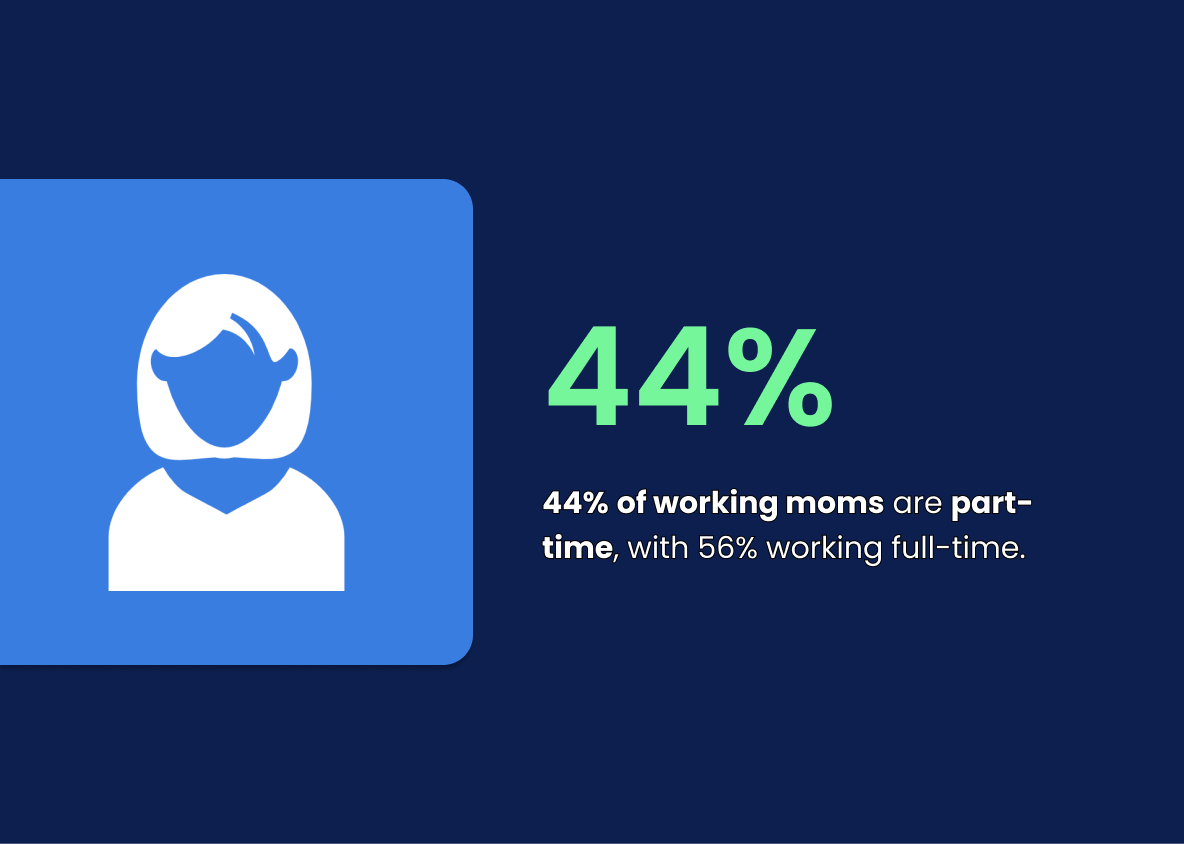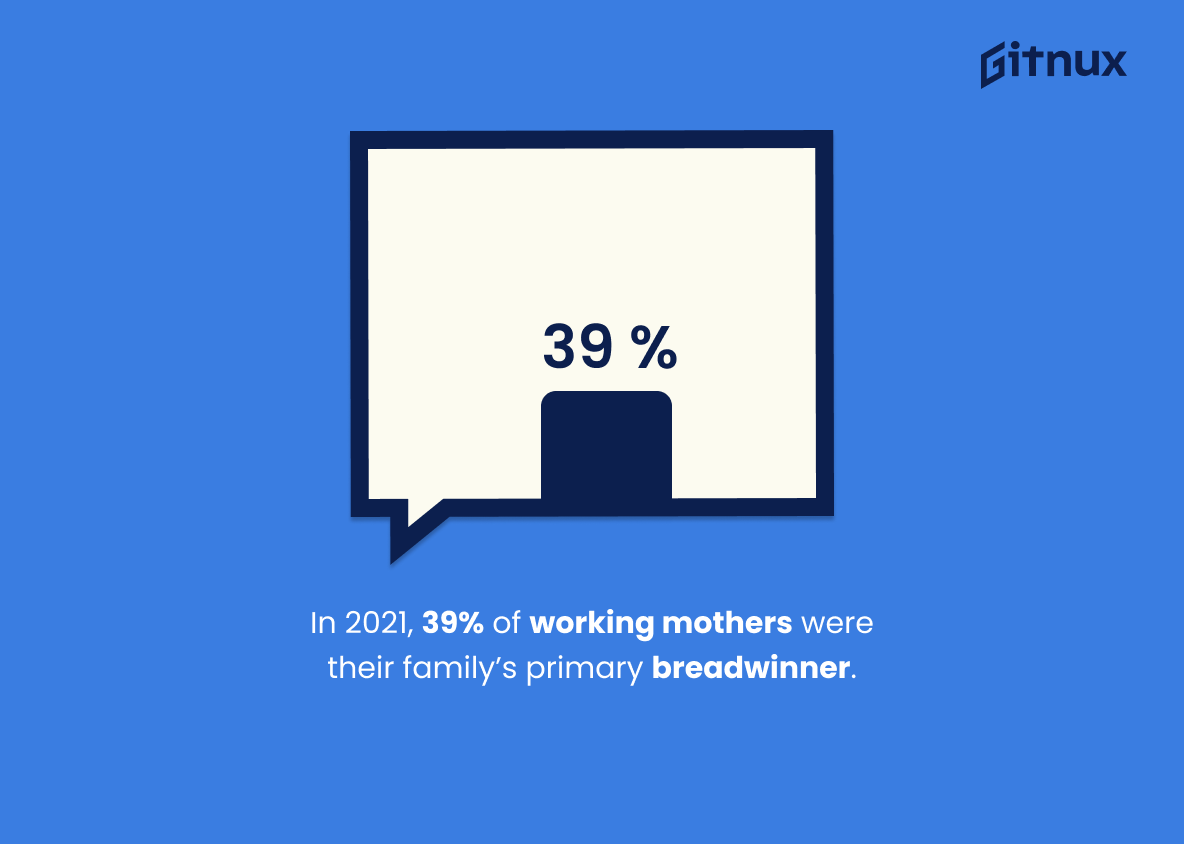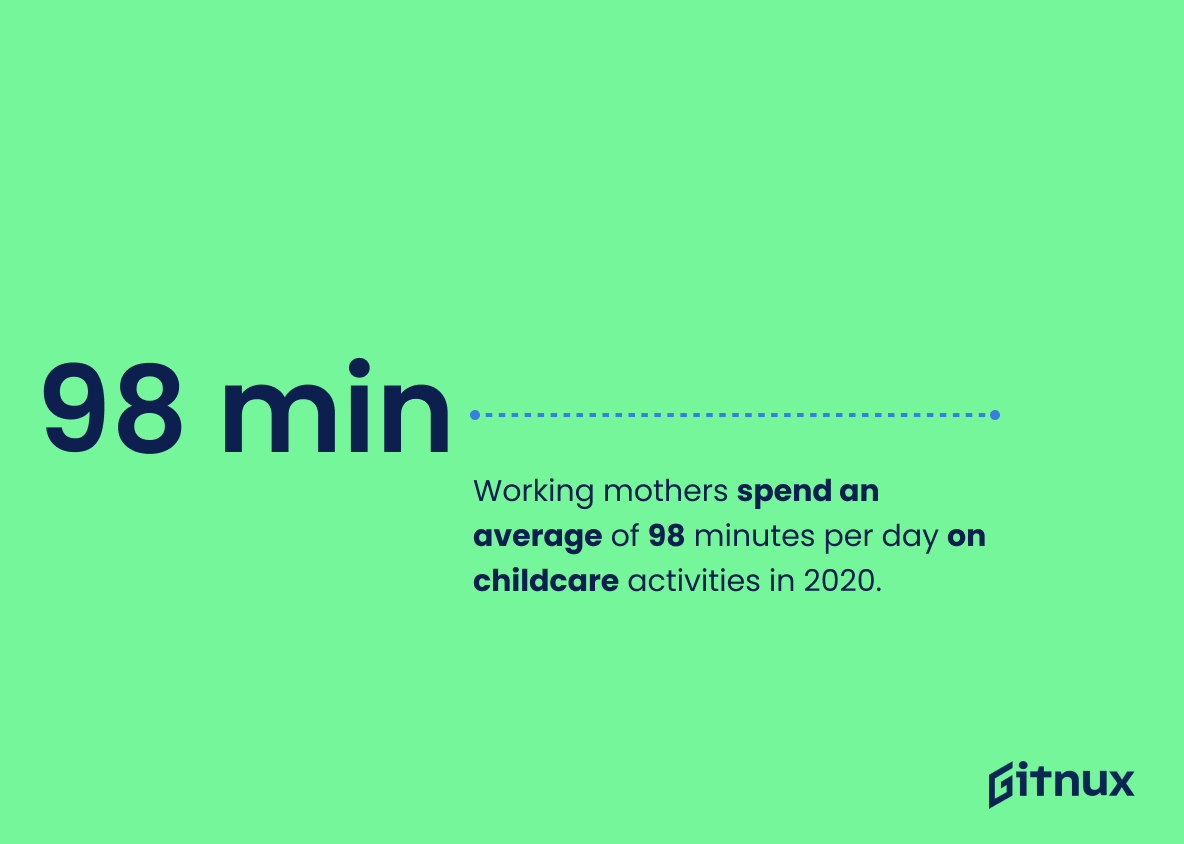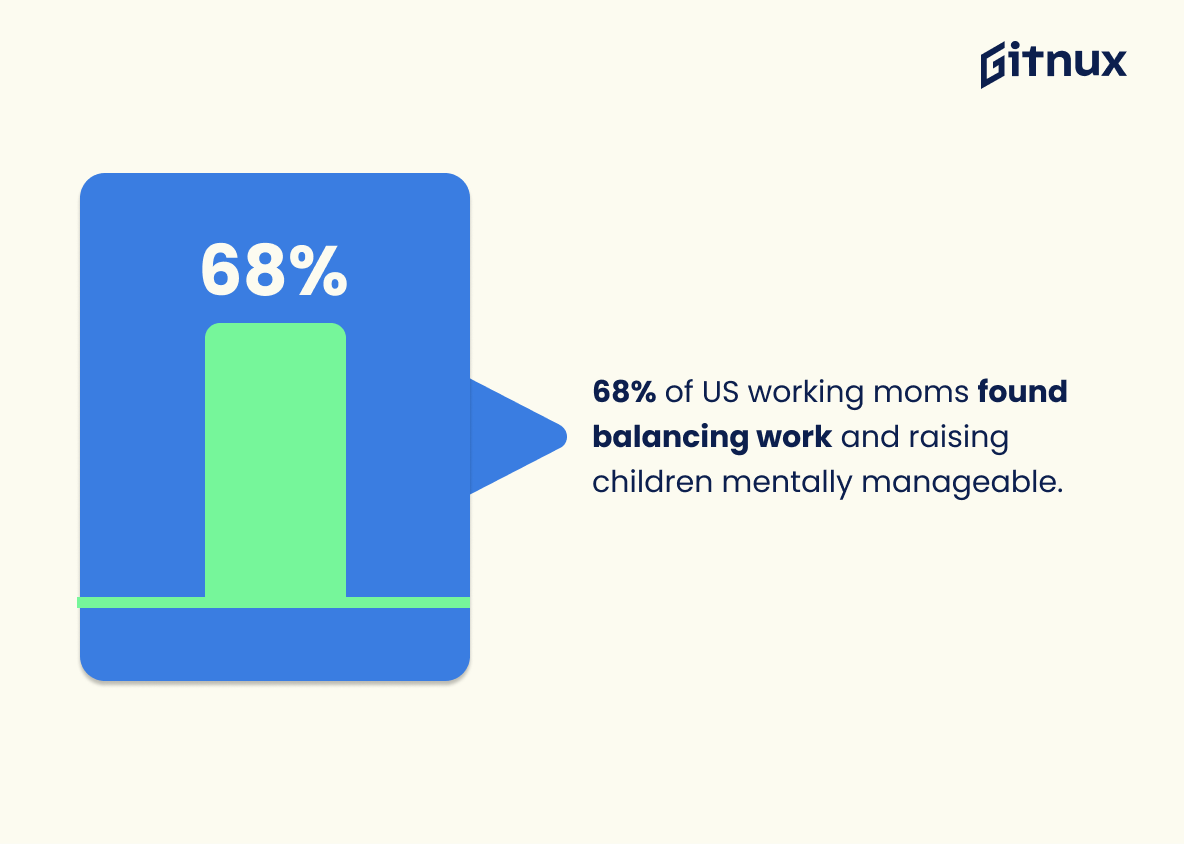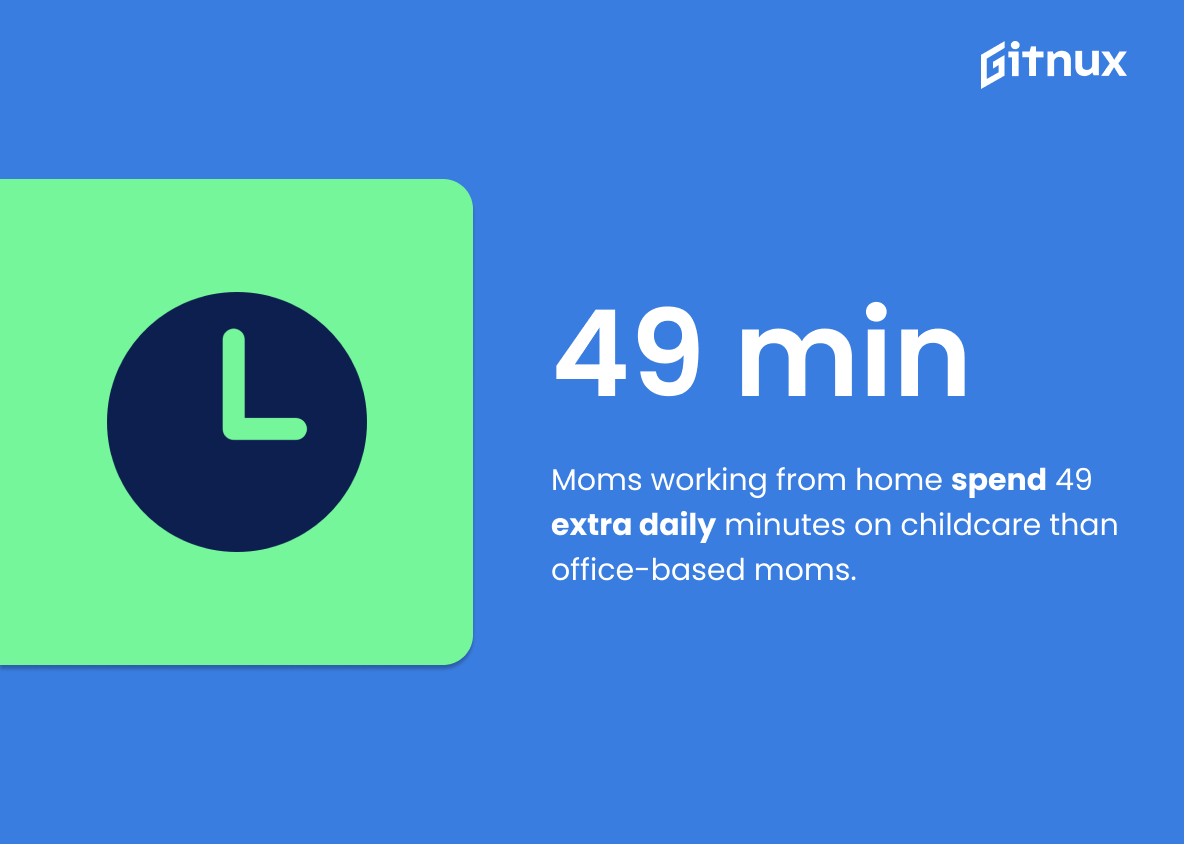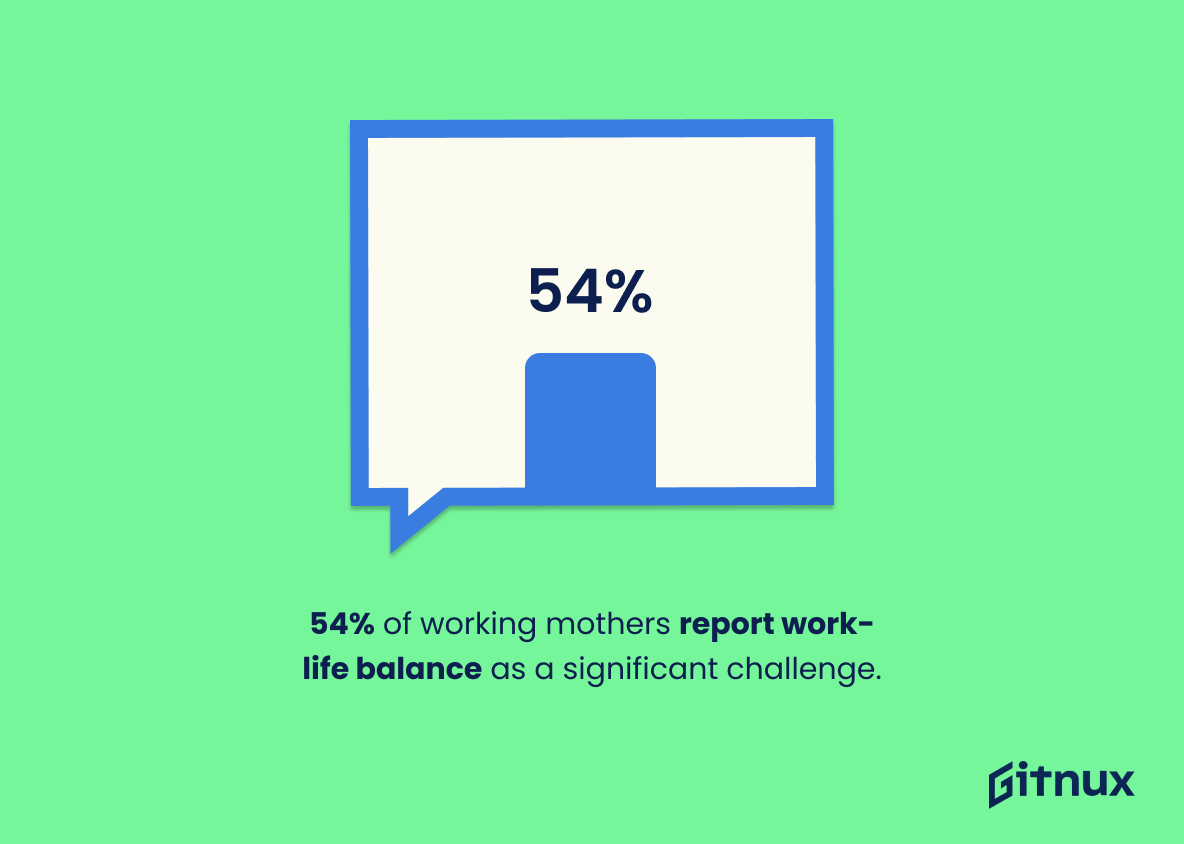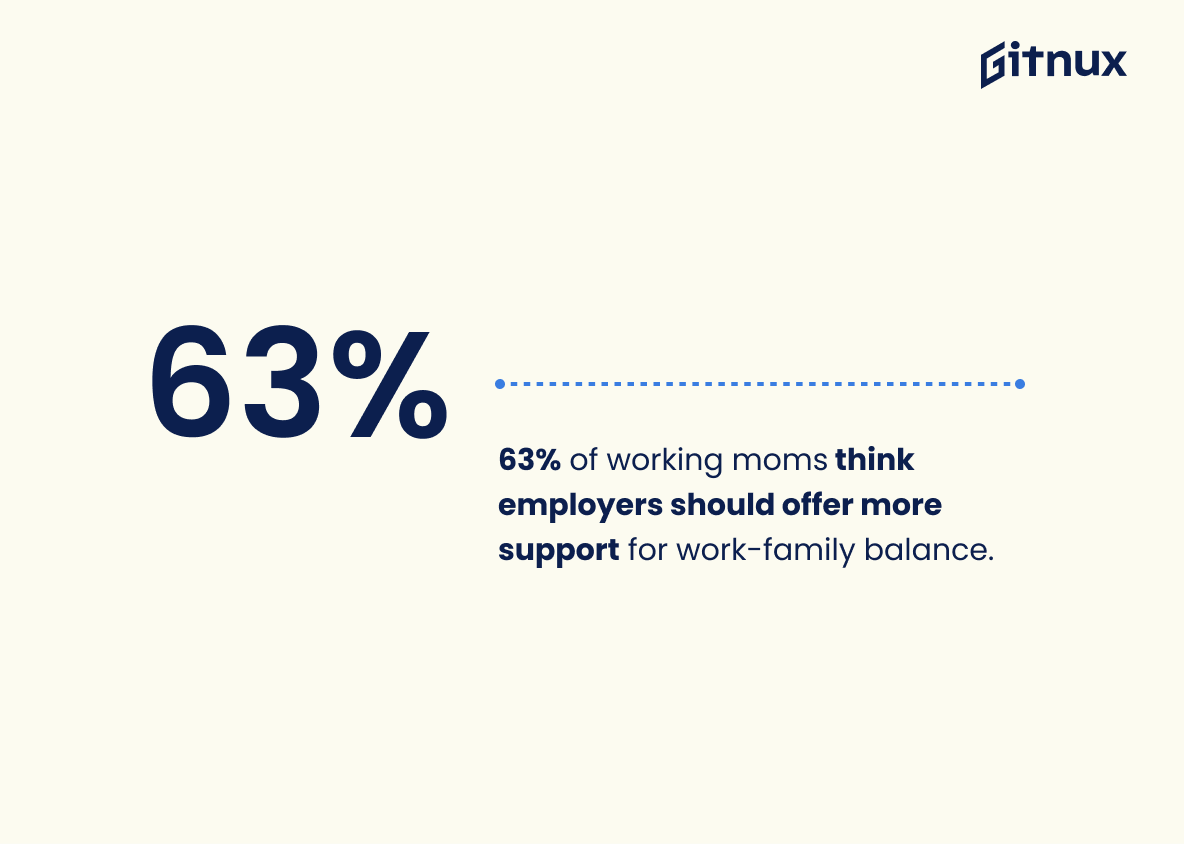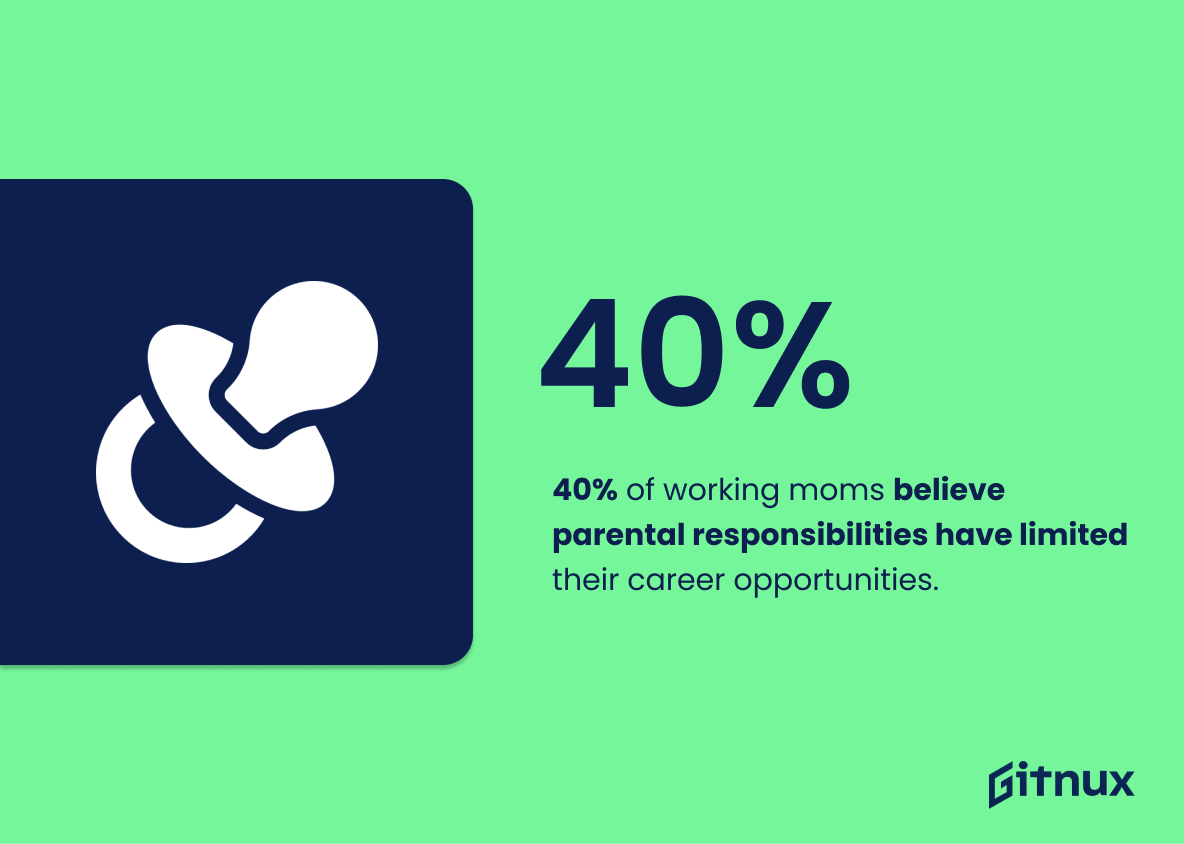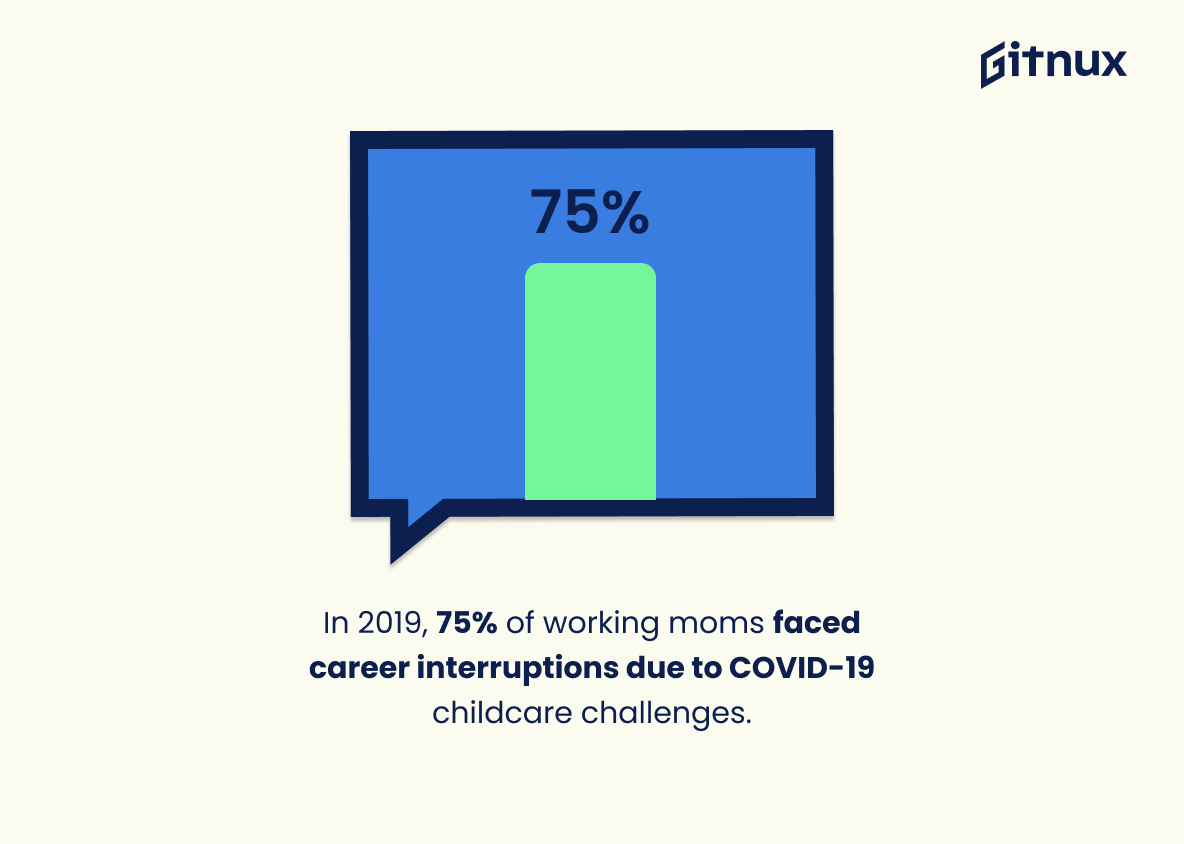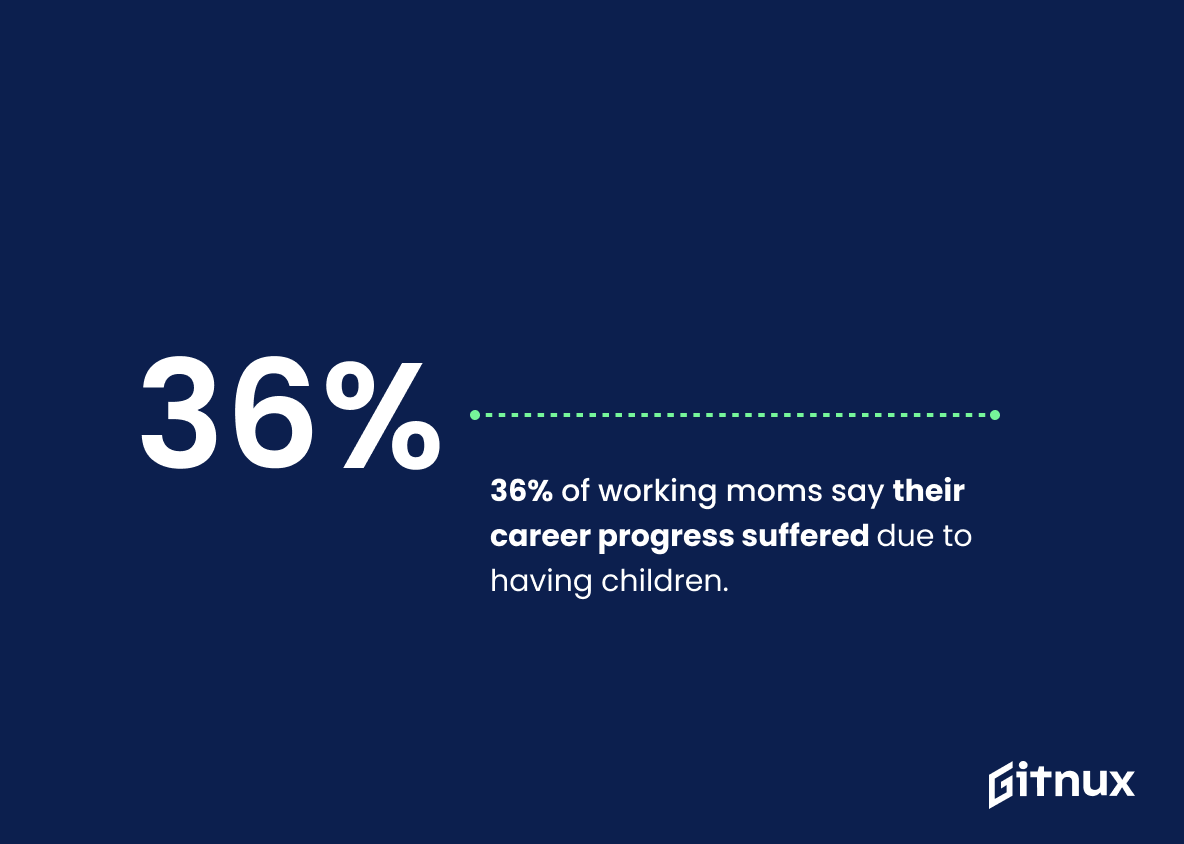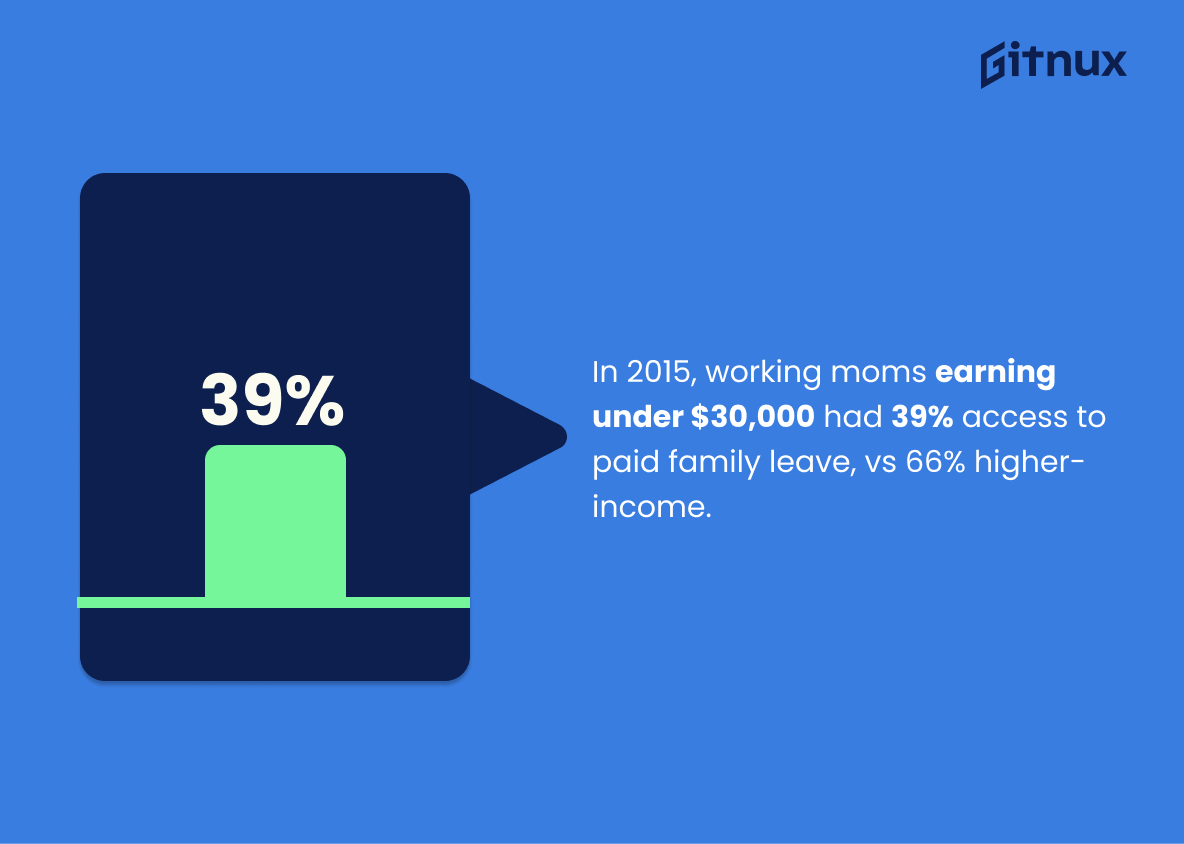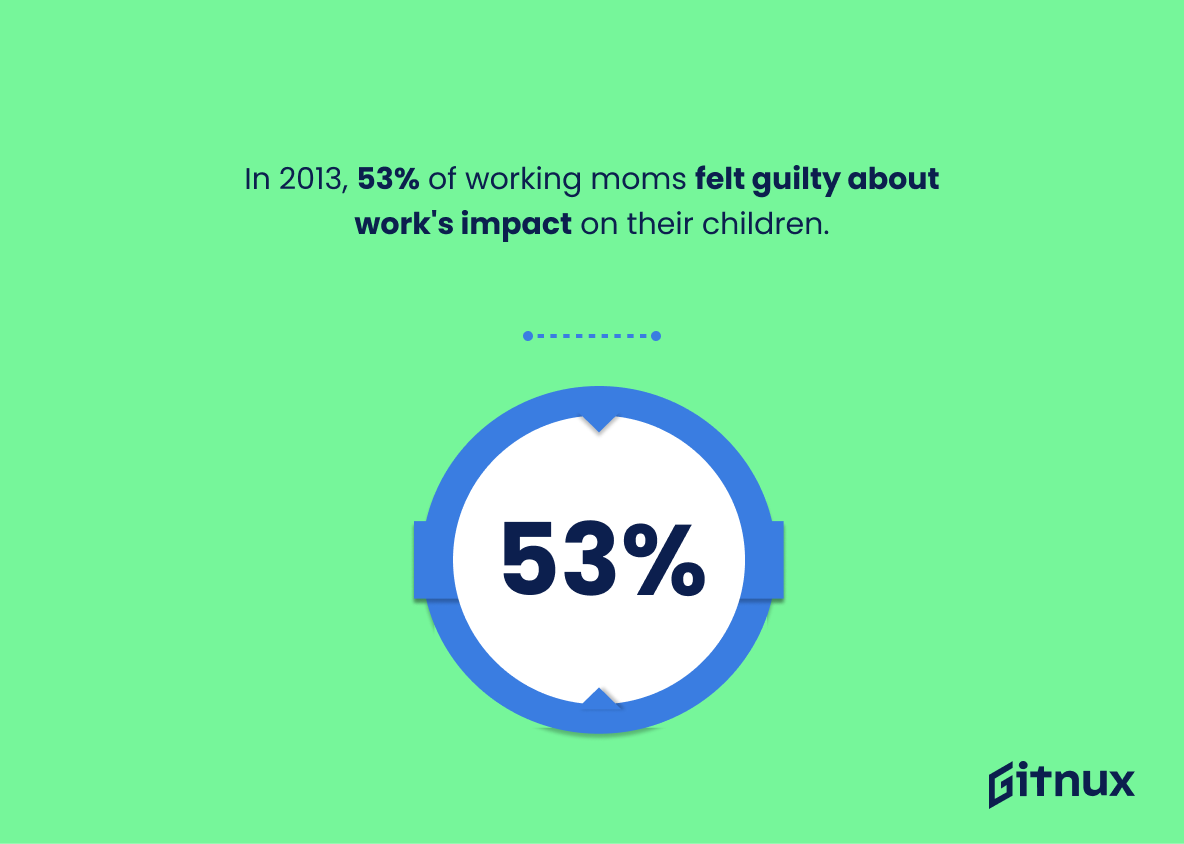The statistics on working mothers are eye-opening. From the Department of Labor’s report that 70.6% of mothers with children under 18 are in the labor force, to a survey from Oxygen Media finding that more than 70% of working women feel their employers aren’t providing enough support for them to balance work and family life, it is clear that there is much progress still needed when it comes to supporting working moms.
This blog post will explore some key statistics about working mothers in 2021 and beyond, including dual-earner couples constituting 63% of all married-couple families with children; 44% of employed moms being part time while 56% were full time; 39 percent being primary breadwinners; 98 minutes per day spent on childcare activities by those who work outside the home; 68 percent feeling mentally manageable when balancing parenting and employment responsibilities; 78 percent saying their job gives them an identity other than just motherhood; 49 extra minutes per day spent on childcare by those who worked from home compared to office workers only; 54 percent reporting difficulty achieving work/life balance as a significant challenge ;63 percemt believing employers should do more for better balance between career and family lives ;21percent single mom living below poverty line ;23 wage gap experienced by fulltime mums versus 7 % among part timers , 40 percemt missing out career opportunities due ot parental responsibilites , 57 percemnt needing additional help managing demands od parenthood &work , 75 experiencing interruptions related ti child care during pandemic 36 having negative impact o ncareer progression due tp kids 53 guilt over how wirk affects kids . We hope this article provides insight into what needs improvement so we can create a better future for our hardworking moms.
Working Mothers Statistics Overview
44% of working mothers work part-time while the other 56% work full-time.
This statistic is a powerful reminder of the diversity of working mothers’ experiences. It highlights the fact that not all working mothers have the same work-life balance, with some opting for part-time work and others taking on full-time roles. This statistic is important to consider when discussing the challenges and successes of working mothers, as it provides insight into the different paths they take to achieve their goals.
In 2021, 39% of working mothers were their family’s primary breadwinner.
This statistic is a powerful reminder of the immense contributions working mothers make to their families. It highlights the fact that, despite the challenges of juggling work and family life, many mothers are taking on the role of primary breadwinner and providing for their families. This statistic is a testament to the strength and resilience of working mothers and the importance of recognizing their efforts.
Working mothers spend an average of 98 minutes per day on childcare activities in 2020.
This statistic is a powerful reminder of the immense amount of time and effort that working mothers put into caring for their children. It highlights the dedication and commitment of these mothers, who often juggle multiple roles and responsibilities. It also serves as a reminder of the importance of providing support and resources to working mothers, so that they can continue to provide the best care for their children.
68% of working mothers in the U.S. felt that working while raising children was mentally manageable.
This statistic is a testament to the strength and resilience of working mothers in the U.S. It shows that despite the challenges of juggling work and family life, the majority of working mothers are able to manage both successfully. This statistic is an important reminder that working mothers are capable of achieving a healthy balance between their professional and personal lives.
78% of working mothers say that their jobs give them a sense of identity in addition to being a parent.
This statistic is a powerful reminder of the importance of work for working mothers. It highlights the fact that their jobs provide them with more than just a paycheck, but also a sense of purpose and identity. This is an important point to make in a blog post about Working Mothers Statistics, as it emphasizes the value of work for mothers and the importance of creating a supportive environment for them in the workplace.
Mothers who work from home spend an extra 49 minutes per day on childcare when compared to those who work exclusively in the office.
This statistic is a powerful reminder of the extra burden that working mothers face when they are juggling both work and childcare responsibilities. It highlights the fact that, even when working from home, mothers are still having to take on extra childcare duties that those who work exclusively in the office do not have to contend with. This statistic is a stark reminder of the extra effort that working mothers put in to ensure that their children are taken care of, and it is an important part of the conversation about working mothers and their unique challenges.
54% of working mothers report work-life balance as a significant challenge.
This statistic is a stark reminder of the difficulties that working mothers face in trying to juggle their professional and personal lives. It highlights the need for employers to provide more support and flexibility to working mothers, so that they can better manage their responsibilities and achieve a better work-life balance. It also serves as a call to action for society to recognize the unique challenges that working mothers face and to provide more resources and support to help them succeed.
63% of working mothers believe that employers should do more to support them in balancing their work and family lives.
This statistic is a powerful indicator of the need for employers to take action in order to better support working mothers in their efforts to balance their work and family lives. It speaks to the fact that the majority of working mothers feel that their employers should be doing more to help them manage their responsibilities. This statistic is a call to action for employers to take steps to ensure that working mothers are given the support they need to succeed in both their professional and personal lives.
21% of single working mothers live below the poverty line.
This statistic is a stark reminder of the financial struggles that single working mothers face. It highlights the need for more support and resources to help these mothers make ends meet and provide for their families. It also serves as a call to action for policy makers to create more equitable opportunities for single working mothers.
Mothers who work full-time experience a 23% wage gap compared to men, while part-time mothers experience a 7% wage gap.
This statistic is a stark reminder of the gender wage gap that persists in the workplace, particularly for working mothers. It highlights the fact that even when women are working full-time, they are still earning less than their male counterparts. This wage gap is even more pronounced for part-time mothers, who are earning 7% less than men. This statistic is an important reminder that there is still much work to be done to ensure that women are paid fairly for their work.
40% of working mothers feel that they have missed out on career opportunities due to their parental responsibilities.
This statistic is a stark reminder of the challenges that working mothers face in balancing their career and parental responsibilities. It highlights the need for employers to create an environment that is supportive of working mothers and their career aspirations. It also serves as a call to action for policy makers to create policies that provide working mothers with the resources and support they need to succeed in their careers.
75% of working mothers in 2019 experienced career interruptions related to child care during the COVID-19 pandemic.
This statistic is a stark reminder of the immense burden that working mothers have had to bear during the COVID-19 pandemic. It highlights the fact that the majority of working mothers have had to take time away from their careers in order to care for their children, often without the necessary support or resources. This statistic is a powerful reminder of the need for greater support for working mothers, and the importance of recognizing the unique challenges they face.
36% of working mothers report that their career progression has been negatively impacted as a result of having children.
This statistic is a stark reminder of the challenges that working mothers face in their careers. It highlights the fact that, despite the progress made in recent years, there is still a long way to go in terms of providing equal opportunities for working mothers. This statistic is a call to action for employers to take steps to ensure that working mothers are not disadvantaged in their careers due to their parental responsibilities.
In 2015, among workers making less than $30,000 a year, only 39% of working mothers had access to paid family leave, compared to 66% of higher-income workers.
This statistic is a stark reminder of the inequality that working mothers face when it comes to access to paid family leave. It highlights the fact that lower-income working mothers are at a disadvantage when it comes to taking time off to care for their families, while higher-income working mothers are more likely to have access to paid family leave. This disparity can have a significant impact on the well-being of working mothers and their families.
53% of working mothers reported feeling guilty about how their work affects their children in 2013.
This statistic is a powerful reminder of the emotional toll that working mothers face. It highlights the internal struggle that many mothers experience when trying to balance their career and family life. It is a stark reminder of the guilt and stress that working mothers often feel, and serves as a reminder of the importance of providing support and resources to working mothers.
Conclusion
The statistics presented in this blog post demonstrate the many challenges that working mothers face. From wage gaps to lack of access to paid family leave, it is clear that there are still significant obstacles for women who wish to pursue a career while raising children. Despite these difficulties, however, most working mothers report feeling mentally manageable and having a sense of identity from their jobs. It is important for employers and policy makers alike to recognize the unique needs of working parents so they can be better supported in balancing work and family life.
References
0. – https://www.gatestoneinstitute.org
1. – https://www.heritage.org
2. – https://www.globalbankingandfinance.com
3. – https://www.workingmums.co.uk
4. – https://www.nap.edu
5. – https://www.bls.gov
6. – https://www.time.com
7. – https://www.parents.com
8. – https://www.pewresearch.org
9. – https://www.mckinsey.com
10. – https://www.dol.gov
11. – https://www.nytimes.com
12. – https://www.iwpr.org
ZipDo, cited June 2023: Working Mothers Statistics
